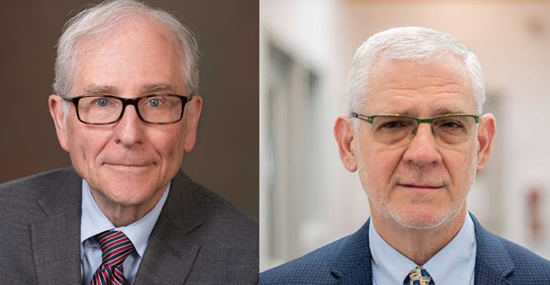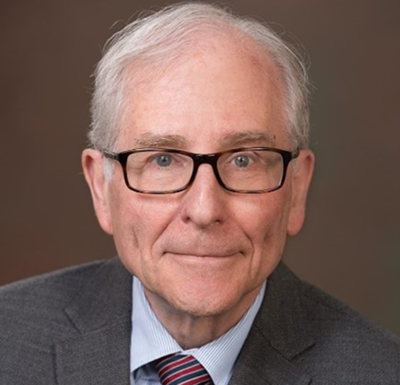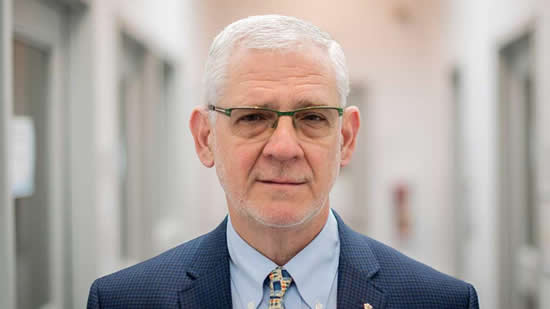Providence Research Profiles: Drs. John Cairns and Julio Montaner
Providence Research is home to many outstanding researchers engaged in groundbreaking work. In this edition of our Providence Research Profiles series, we are profiling two researchers who have received prestigious recognitions this year for their impactful work in their fields, Drs. John Cairns and Julio Montaner.
October 30, 2024 | Grace Jenkins

Providence Research is home to many outstanding researchers engaged in groundbreaking work. In our Providence Research Profiles series, we spotlight some of the remarkable individuals contributing to our research community. This month, we are profiling two researchers who have received prestigious recognitions this year for their impactful work in their fields.
Dr. John Cairns is Dean Emeritus of the UBC Faculty of Medicine and a researcher with the Centre for Cardiovascular Innovation (CCI-CIC). He was appointed to the Order of Canada, one of the country’s highest honours, for his major international contributions to cardiology and his role in the expansion of UBC’s Medical School.
Dr. Julio Montaner is the is the Executive Director and Physician-in-Chief of the BC Centre for Excellence in HIV/AIDS (BC-CfE). He was awarded the King Charles III Coronation Medal, which recognizes Canadians who have made significant contributions to the country, a province, territory, region, or community, for his internationally recognized research fighting against HIV/AIDS.
Dr. John Cairns shaped the field of cardiology, heart attack treatment

Dr. John Cairns has made international contributions to medicine, leading research that has established new clinical practice guidelines and shaped the field of cardiology, but when he was beginning his education, he was torn between pursuing medicine or engineering. Ultimately, he realized he found medicine more fulfilling, particularly the ability to influence health outcomes.
“I knew from the first day in medicine that I was in the right place,” says Dr. Cairns.
He went on to practice cardiology for many years, becoming interested in medical research while working at McMaster University.
“It was great to be an expert in management of cardiac problems, but it was even more satisfying to develop areas of new knowledge,” says Dr. Cairns. It was motivating to make breakthroughs that would help not only his current patient, but all patients with that condition.
He was initially interested in discovering ways to measure and reduce the size of myocardial infarctions – heart attacks. He later led a multi-centre study looking at the impact of using aspirin to treat unstable angina, a condition where blood supply to the heart is reduced and complete blockage is threatened. The results were dramatic. The risk of developing a heart attack was reduced by fifty per cent and death rates by seventy per cent. Aspirin became a fundamental part of treatment for this condition the world over.
As part of the Oxford-led ISIS-2 clinical trial, Dr. Cairns and his colleagues at McMaster brought together eighty hospitals across Canada to show that aspirin combined with the thrombolytic drug streptokinase dramatically reduced death rates in heart attack patients.
Another study conducted by Dr. Cairns and McMaster colleagues and involving patients from both St. Paul’s and Vancouver General Hospitals, found that the medication amiodarone reduced mortality rate of patients who survived a heart attack but had an abnormal heart rhythm. Amiodarone became the primary treatment for this condition, until it was largely overtaken by the advent internal cardiac defibrillators. Today, it is still used when those are not an option.
Growing medical schools at UBC, McMaster University
Dr. Cairns spent twenty-one years at McMaster, eight of which he served as the Chair of the Department of Medicine. He helped to build a substantial cardiovascular program and grow the Department of Medicine.
In 1996, he became Dean of the UBC Faculty of Medicine. When he took the role, the medical school had half as many students for the population size as the Canadian average. In his role as Dean, he led efforts to expand it province-wide, with campuses in Prince George, Victoria and Kelowna. He credits his successors, Deans Gavin Stuart and Dermot Kelleher, with full implementation of the expansion and further development of the medical school. The enrollment of medical students and residents is now almost three times what it was in 1996. Today, UBC is one of the top medical schools in Canada.
Honoured to be appointed to the Order of Canada
While retired from his role as Dean, Dr. Cairns is still involved with research through the CCI-CIC, of which he has been a member since it was established by Dr. David Wood in 2021. A recent study he conducted, in collaboration with Dr. Wood and Dr. Shamir Mehta, was published in the New England Medical Journal. It investigated whether putting additional stents into coronary arteries that are narrowed, but not fully blocked, while treating a patient for a heart attack would improve outcomes. They found that this led to a marked reduction of recurrent heart attacks and death, and this approach is now standard therapy.
Dr. Cairns was hounoured to be appointed to the Order of Canada and is grateful to those who nominated him for the honour.
“It's nice to be recognized amongst your medical colleagues. It’s even nicer to be recognized amongst other Canadians not directly involved in the practice of medicine,” says Dr. Cairns.
Dr. Julio Montaner changed the course of HIV/AIDS treatment

Dr. Montaner’s research in developing antiretroviral therapies and the Treatment as Prevention (TasP) strategy has shaped HIV/AIDS treatment in British Columbia and around the world.
Originally from Buenos Aires, Argentina, Dr. Montaner went into medicine like his father, who was a prominent respiratory physician. After meeting at a conference in Uruguay he was invited by Dr. James Hogg, co-founder of the Centre for Heart Lung Innovation, to come to Vancouver to conduct research.
Addressing the primary killer of HIV patients
As a part of his Canadian medical training, Dr. Montaner was working as a fellow in the St. Paul’s Hospital respiratory division at the beginning of the HIV/AIDS pandemic. He would often treat HIV patients who had Pneumocystis pneumonia, which was the primary cause of death for people with HIV at the time. Dr. Montaner realized that these deaths were driven by immune dysregulation, not just deficiency, and helped to create an effective anti-inflammatory treatment.
“By the time we were done with [Pneumocystis pneumonia], we could diagnose, treat and prevent it, one hundred per cent. It was no longer a problem. But I was frustrated, because my patients were going on to die from other AIDS-related complications,” says Dr. Montaner.
Leading research to develop a treatment for HIV
Dr. Montaner was appointed as the Director of the AIDS Research Program at St. Paul’s Hospital. He was involved in the Canadian clinical trial of the first antiretroviral drug candidate, azidothymidine, but found that the treatment would fail as the virus developed resistance.
To solve this problem, he took inspiration from tuberculosis treatment, which his father had specialized in. Tuberculosis similarly becomes resistant to single antibiotics over time, but treatment with a combination of medicines at once is effective. Dr. Montaner became convinced that this could be the solution for HIV.
He played a key role in designing the international INCAS trial, which tested treatment with a combination of three antiretroviral drugs. This treatment, known as highly active antiretroviral therapy (HAART) was so effective, the study’s virologist thought something was wrong with the samples when he could not get the virus to grow.
At the same time these findings were coming out, Dr. Montaner was an organizer of the 1996 International AIDS Conference.
“I said, we need to redraw the program for the conference, because I think we have the solution for the treatment of HIV,” says Dr. Montaner.
Given the urgency of the pandemic, this treatment was immediately rolled out in B.C. This meant that Dr. Montaner and his colleagues had even more data to support a new treatment guidance paper, published in The Journal of the American Medical Association (JAMA), which was unveiled at the conference.
“That conference became the coming out party for highly active antiretroviral therapy for HIV. And since that conference, morbidity and mortality for HIV and AIDS has gone down,” says Dr. Montaner.
Developing the Treatment as Prevention Strategy
As more people received HAART, data showed that while life expectancy was rising for people with HIV, new cases were unexpectedly decreasing. Dr. Montaner established that there was a proportional relationship between the number of people receiving antiretroviral therapy and the number of missing HIV cases.
“I said, bingo, this is treatment as prevention. Treatment prevents morbidity, mortality and transmission,” says Dr. Montaner.
Treatment as Prevention forms the basis for the 90-90-90 by 2030 Target, created by Dr. Montaner and adopted by the United Nations, which aims to reach a ninety per cent decrease in morbidity, mortality and transmission of HIV by 2030 by expanding access to HIV testing and treatment. That goal has been surpassed in B.C., where AIDS-related mortality is now negligible and new HIV infections have virtually disappeared – most new cases now come in from other provinces and countries.
“Dr. Montaner’s recognition of the need to go beyond conventional patterns of healthcare delivery was essential in reaching marginalized hard-to-reach patient populations, who were fueling the epidemic,” says Dr. Peter Phillips, medical director of the BC-CfE’s Urban Health Acute Care Unit and a longtime colleague of Dr. Montaner’s. “His ability to engage provincial, federal, and international leaders in order to provide adequate support for essential HIV-related health programs has been critical in controlling the HIV pandemic, not just in British Columbia, but elsewhere in Canada and abroad.”
Dr. Montaner feels fortunate that his work has been widely recognized, most recently with the King Charles III Coronation Medal.
“For me, this is a reflection of the work of the centre, the province, and the team,” says Dr. Montaner.
Dr. Cairns’ and Dr. Montaner, medical pioneers in their fields, are both highly deserving of these prestigious recognitions. Their prolific research has saved lives and shaped health care in the fields of cardiology and HIV/AIDS treatment, in Canada and around the world.
Contact
Shaf Hussain
SHussain@providencehealth.bc.ca
Providence Health Care
Source: https://www.providenceresearch.ca/en/providence-research-profiles-drs-john-cairns-and-julio-montaner
"Reproduced with permission - Providence Research"
Providence Research
For more HIV and AIDS News visit...
Positively Positive - Living with HIV/AIDS:
HIV/AIDS News |